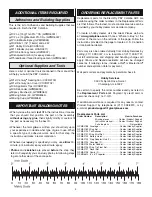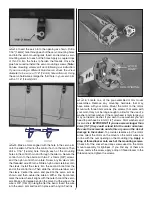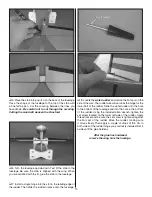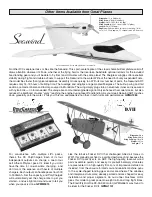
15
❏
4. After installing the struts to the fuselage turn the
airplane upside-down. Align the struts on the wing making
sure that the strut rests on the wood sheeting, not the open
wing structure. Carefully drill a 1/16" [1.6mm] hole in the top
the wing but
do not drill through the top of the wing!
❏
5. Insert and then remove a 2 x 10mm [3/8"] washer head
screw into each of the holes. Apply a couple of drops of thin
CA into each hole. After the glue has dried install the screws
into the strut and wing.
❏
6. Your kit comes with four plastic blisters. Two are extra
and should be saved if the time should come that you need to
gain access to the servos and removal of the original blisters
makes them unusable. Apply a bead of RC 56 canopy glue
around the entire opening of the fuselage. (We recommend
this glue because it dries completely clear, is water resistant
and after the glue has dried it is easily separated from the
item it holds in place with a hobby knife or hobby putty knife.)
Hold the blisters in place with masking tape until the glue has
dried. Clean any excess glue from the fuselage with a damp
cloth before the glue dries.
❏
7. Install the prop adapters and propellers to the motor shaft.
❏
8. Cut out and apply decals as shown on the box cover.
GET THE MODEL READY TO FLY
Install and Connect the Motor Battery
Before you can power the radio system and set up the
controls, the motor batteries will need to be charged. Charge
the batteries, and then read the following precautions on
how to connect multiple packs for fl ying the model.
If you wish to use two smaller capacity 11.1V batteries, this
is how to connect them:
These two 1500mAh batteries (both 11.1V) are
being joined in
PARALLEL
. The result will be
one
11.1V, 3000mAh
battery.
This is a
PARALLEL
battery
adapter (GPMM3142) that
connects two batteries in series.
11.1V (3-Cell)
GPMP0613
OKAY
11.1V (3-Cell)
GPMP0613
Connecting batteries in “
Parallel
” means to connect the +’s
to the +’s and the –’s to the –’s. This combines the batteries’
capacities, but the voltage remains the same.






































